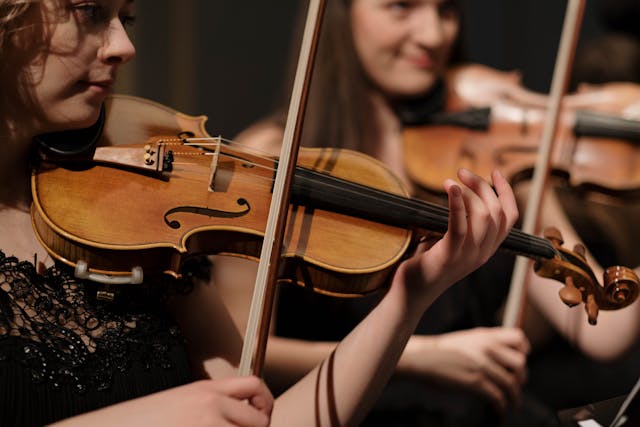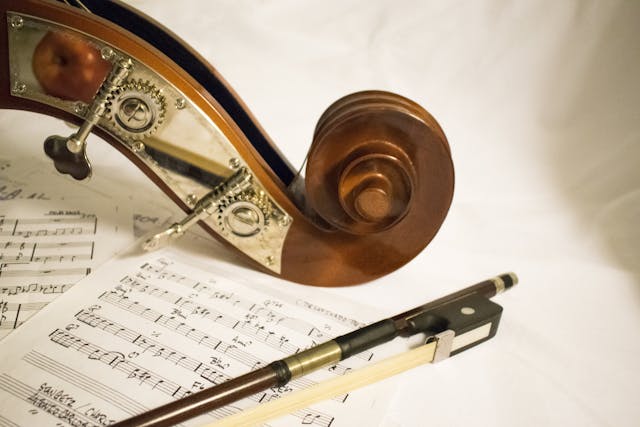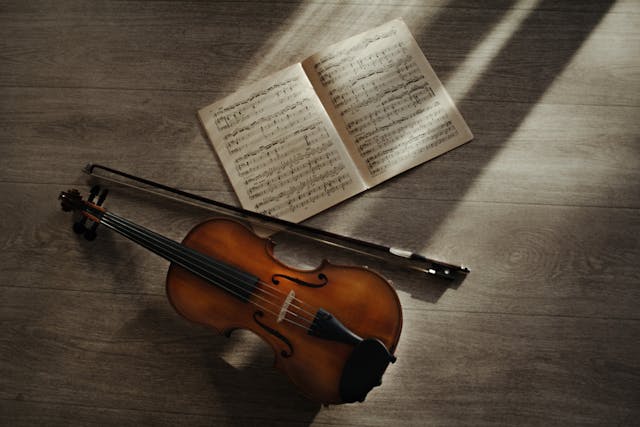Greeting and welcome to GertieBlu! Today, we’re tuning in to the world of violins—a beautiful, expressive instrument that has captured hearts for centuries. Whether you’re a music enthusiast, an aspiring musician, or just curious about this elegant instrument, this post will guide you through the basics of the violin and provide some tips on how to start playing.
The Charm of the Violin
The violin is often called the “queen of instruments,” and for good reason. Its rich, warm tones and wide expressive range make it a favorite in many musical genres, from classical to folk, jazz, and even rock. The violin’s design, perfected over hundreds of years, allows it to produce sounds that can be both powerful and delicate, making it an incredibly versatile instrument.
Anatomy of the Violin
Before we delve into playing, let’s get familiar with the violin’s parts:
- Body: The hollow wooden body amplifies the sound. It includes the top (belly), back, and sides, usually made of maple or spruce.
- Neck and Fingerboard: The neck is the long, slender part where you press the strings. The fingerboard, a smooth black surface, lies on top of the neck.
- Strings: Violins have four strings tuned to G, D, A, and E. These strings are what you’ll bow or pluck to create sound.
- Bow: Made from horsehair and wood, the bow is used to draw across the strings, producing sound.
- Pegbox and Pegs: The pegs at the top of the violin are used to tune the strings.
- Bridge: This small piece of wood holds the strings at the right height and transfers their vibrations to the body.
- Chin Rest: Located at the bottom, it provides comfort and stability as you play.

Getting Started: Holding the Violin and Bow
Learning to hold the violin and bow correctly is the first step in playing beautifully.
Holding the Violin:
- Rest the violin on your left shoulder, with your chin on the chin rest.
- Support the neck with your left hand—this hand will press the strings.
- Your right arm should be relaxed, ready to handle the bow.
Holding the Bow:
- Grip the bow with your right hand using your thumb, middle, and ring fingers, with your pinky resting lightly on top.
- Keep your hand relaxed and flexible. The bow should feel like an extension of your arm.
The Basics of Playing
Now that you’re familiar with how to hold the violin and bow, let’s explore how to produce sound.
- Tuning Your Violin: Start by tuning your violin to ensure it sounds right. You can use a digital tuner or tune by ear. Each string should be tuned to its corresponding note (G, D, A, E).
- Bowing: Place the bow on one of the strings, near the middle of the string, and draw it across while applying gentle pressure. The bow should move parallel to the bridge for a smooth sound. Start with long, slow strokes to get a feel for it.
- Left-Hand Fingering: Your left hand presses the strings to produce different notes. Start by pressing down on a string with your finger and bowing that string. Experiment with different fingers and strings to familiarize yourself with the notes.
- Posture and Relaxation: Good posture is key to playing well. Stand or sit up straight, with relaxed shoulders. Avoid tension in your arms and hands—relaxation leads to a better sound.
Tips for Beginners
Starting out on the violin can be challenging, but with patience and practice, you’ll see progress. Here are some tips to help you on your journey:
- Practice Regularly: Consistent practice, even if it’s just 15 minutes a day, will help you improve faster than occasional long sessions.
- Focus on Tone: Pay attention to the sound you’re producing. A clean, beautiful tone is more important than speed.
- Use a Metronome: This will help you keep time and develop a sense of rhythm.
- Listen to Violin Music: Listening to accomplished violinists can inspire you and help you understand the instrument’s potential.
Finding a Teacher or Resources
While it’s possible to learn on your own, having a teacher can significantly accelerate your progress. A good violin teacher will guide you through proper techniques, help you avoid bad habits, and provide personalized feedback.
If you prefer self-learning, there are many online resources available, including video tutorials, sheet music, and apps designed to help you practice.

Final Thoughts
Learning to play the violin is a rewarding experience, offering both challenges and immense satisfaction. As you progress, you’ll find that the violin becomes not just an instrument, but a means of expressing your emotions and creativity. Remember, every great violinist started just where you are—by picking up the instrument, making some noise, and slowly transforming that noise into beautiful music.
At GertieBlu, we’re passionate about exploring the world of music, and we hope this guide has inspired you to pick up a violin and start your own musical journey. Whether you’re aiming to play solo pieces, join an orchestra, or simply play for fun, the violin offers endless possibilities.
Happy practicing, and may your violin journey be filled with joy and beautiful melodies!
GertieBlu









